Artist Research - Developing Practice
- amiedodgsonart
- Feb 1, 2021
- 15 min read
Pipilotti Rist
Wikipedia
"Pipilotti Elisabeth Rist (born 1962) is a Swiss visual artist best known for creating experimental video art and installation art. Her work is often described as surreal, intimate, abstract art, having a preoccupation with the female body. Her artwork is often categorized as feminist art. In a 2011 Guardian exhibition review article, Rist describes her feminism: "Politically," she says, "I am a feminist, but personally, I am not. For me, the image of a woman in my art does not stand just for women: she stands for all humans. I hope a young guy can take just as much from my art as any woman.""
"Her works generally last only a few minutes, borrowing from mass-media formats such as MTV and advertising, with alterations in their colors, speed, and sound."
"Her colorful and musical works transmit a sense of happiness and simplicity. "
"The images are charged by intense colors, and are simultaneously strange, sensual, and ambiguous."
Pipilotti Rist:
“In the Western world, color is underestimated,” she says. “Color is borderless, it’s dangerous, it’s emotional, like music.”



Rist's use of colour and her very visual, tactile imagery and her use of sound, music and melodies are important and valuable to me within my practice. The surreal imagery which could be narrative but also fantastical at the same time.
How could I explore colour and tactile imagery within my own practice?
How could I experiment with sounds alongside imagery? Could it be jarring and not match up or could the images flow well with the music?
What sound would I use to convey the tactile?
How could I combine narrative with fantastical?
Mark Leckey - Dream English Kid
"Mark Leckey is one of the most influential artists working today.
Since the late 1990s, his work has looked at the relationship between popular culture and technology as well as exploring the subjects of youth, class and nostalgia. He won the 2008 Turner Prize. He works with sculpture, film, sound and performance – and sometimes all four at once."
"Mark Leckey was born in Birkenhead in 1964.
Growing up in a working-class family on the outskirts of Liverpool, Leckey was no stranger to being an outsider.
As a teenager, he found a place with the 'casuals', a youth subculture that mixed football hooliganism and designer fashion.
He graduated from Newcastle Polytechnic in 1990 and moved to London in 1997."
"Leckey’s work explores the intersection of several cultures: youth, rave, pop, and the history of Britain. His practice is similarly eclectic, bringing together sculpture, film, sound, and performance."
"Dream English Kid, 1964–1999 AD is another video collage. It draws on archival material from television shows, advertisements and music. In doing so, it creates a record of all the major events in the artist’s life from the 1970s through the 1990s, bridging personal and cultural history."




Leckey's use of found footage to create a sense of nostalgia is something that feels important to my practice. Nostalgia is what I feel everyday in some way or another. It's what connects us to certain things/objects and it can also be brought about through the embodied experience, the senses. Therefore how can I explore a sense other than visual through video and found footage to create a narrative? How could I explore consciousness and embodiment through my work? Could it be through an installation like in Laure Prouvost's work, where she provides a tactile environment with a video placed into the space and the object co-inciding with what is playing on the video? Could it be interactive installation, where the viewer becomes part of the artwork?
How could I use found footage in this way? Could it be in relation to the Anthropocene? Which part of the Anthropocene, because it is such a vast concept? I need to pin this down or it will possibly come out in my practice as I go along. Which major life events have affected me sub-consciously that I would like to show in my practice?
These are all questions I will be asking myself throughout this unit and whilst I am gathering research and creating work.
The child's brain is mostly developing from the age of being born to 7 years old. This time is important in a child's life in relation to it's environment, what it sees, experiences and who it is around. Their brain is like a sponge. Could what is going on in the world during that time affect a child's brain?
I would like to explore this further into my artwork and produce a video using found footage of the what was going on in the Anthropocene from 1989 to 1997. Also bringing in other found footage of memories from my childhood. I remember being pretty stuck on different TV shows when I was a child and also certain adverts stick out in my mind. How could bringing these in create a narrative of my life, possibly stirring up memories for other people my age and bringing a sense of nostalgia to them and emotions somehow.
Laure Prouvost
"Language – in its broadest sense – permeates the video, sound, installation and performance work of Laure Prouvost. Known for her immersive and mixed-media installations that combine film and installation in humorous and idiosyncratic ways, Prouvost’s work addresses miscommunication and ideas becoming lost in translation. Playing with language as a tool for the imagination, Prouvost is interested in confounding linear narratives and expected associations among words, images and meaning. She combines existing and imagined personal memories with artistic and literary references to create complex film installations that muddy the distinction between fiction and reality. At once seductive and jarring, her approach to filmmaking employs layered storytelling, quick edits, montage and wordplay and is composed of a rich, tactile assortment of images, sounds, spoken and written phrases. The videos are often shown within immersive environments which comprise found objects, sculptures, painting and drawings, signs, furniture and architectural assemblages, that are rendered complicit within the overarching narrative of the installation."



There is a sense of wonder, fantasy and the absurd to Laure Prouvost's work. Language, imagery and sound is an important part of my practice and Prouvost executes it in a brilliant way. The way she combines video with sculpture or rather, fills the exhibition space with a sort of landscape for viewing the video in. This is something to think about for the exhibition at the end of the unit. Another way in which she has influenced my work and what seems to be prevalent when looking back through other artist's work is that there is a reoccurring theme of nostalgia and memory. Experimenting with non-linear sounds and words to express tactility through the way I pronounce a word. Is ASMR (autonomous sensory meridian responses) something to research and experiment with? I love the sound of different words and repeating them over and over. The words then lose meaning and become an entity of themselves but then also adding and some imagery along side it to create a fantastical narrative and producing sounds that heighten the senses through video.
Lygia Clark
Lygia Clark's body of work 'Nostalgia of the body' explored the relationship between participant and object. Using what are called relational aesthetic pieces. For example, Sensory Hoods, 1967 (Left) and The I and the You, 1967 (right). Both works explore the senses, perception and consciousness and this is something I would like to explore in my own practice, but using video and sound. Her work also explore nostalgia but in a different way, by using the body and its senses as a tool for the participant to experience it. Each experience is subjective too which is something that intrigues me; humans and how we are actually connected but given our life experiences, everyones experience will be different. It's important to me within my practice to explore ways of heightening the viewers senses, giving them a heightened experience when they view the work. Whether thats tapping into their consciousness through an embodied experience or evoking a sense of nostalgia or another emotion. Making emotive work for me is important. Bringing people into experiencing the now, watching my videos and heightening the senses in the body somehow this does that. My aim in the future is to be an art therapist so exploring things like this I feel is very relevant and valuable.
Olafur Eliasson
"Olafur Eliasson (Icelandic: Ólafur Elíasson; born 1967) is a Danish–Icelandic artist known for sculptures and large-scale installation art employing elemental materials such as light, water, and air temperature to enhance the viewer’s experience.
Like much of his work, the sculpture explores the common ground between art and science. It is molded into the shape of a toroid, recalling natural forms found from black holes and galaxies to seashells and coils of DNA."
Olafur's interest in enhancing the viewer's experience is vital in the inspiration for what I would like to achieve within my practice. His experimentation with various scientific elements is valuable for me to know and be inspired by. His use of colour in relation to the senses is also valuable research that I can look into when reading various accounts of experiencing these artworks first hand due to colour being an interest of mine.
(Top left: Your Blind Passenger, 2010.
Top Right: Your Spiral View, 2002. All by Olafur Eliasson
Bottom: Room For One Colour, 1998)
Bonnie Camplin
Tate
"Camplin gathers her expanded practice under a single idea: ‘The Invented Life’. Central to this is what Camplin describes as a ‘myth-science of energy and consciousness research’ in which subjective experience is taken as the primary form of evidence.
Her work spans the disciplines of drawing, film, performance, music and writing as well as immaterial and situational research. The Military Industrial Complex took the form of a study room exploring what ‘consensus reality’ is and how it is formed, drawing from physics to philosophy, psychology, witchcraft, quantum theory and warfare."
Camplin's exploration of energy and consciousness is highly inspiring for my work due to the fact that it is the subjective experience again which is researched.
Camplin's exploration of complex themes concerning fundamental questions of being human. She addresses concepts of reality and consciousness. She does this through drawing and her exhibitions are to a non art goer would possibly look like 'just' drawings however, in her work, she explores how we relate to and perceive our material, human, and non-human entities. I love how her work is mysterious and fantastical. She references excerpts from theory, research, texts of different knowledge systems as well as her own experience. This inspires me to use my own experience. Especially during the pandemic when my own experience is all I have right now. Bonnie Camplin’s work also reflects the process of making art itself. She believes that Art is a potential strategy for accessing certain knowledge which I fully agree with. What is that knowledge though?
Hito Steyerly
Andrew Kreps
"Hito Steyerl (born 1966 in Munich, Germany) is a filmmaker, visual artist, writer, and innovator of the essay documentary.
Her prolific filmmaking and writing occupies a highly discursive position between the fields of art, philosophy and politics, constituting a deep exploration of late capitalism’s social, cultural and financial imaginaries. Her films and lectures have increasingly addressed the presentational context of art"
Serpentine Galleries :" In this film artist Hito Steyerl discusses her project at the Serpentine Galleries, which includes an exhibition, Power Plants; an app, Actual Reality OS, and a series of walks and a tour, Power Walks. Curator Amira Gad also describes the way the three elements of the project combine. The videos in the exhibition were co-commissioned by the Serpentine Galleries and The Stores X, and the audio created by Kojey Radical, in collaboration with Hito Steyerl, and produced by The Vinyl Factory."



"The series of video sculptures featured in this exhibition, Power Plants, were generated by neural networks: computer systems modelled on the human brain and nervous system, which were programmed to predict the future by calculating the next frame in the video. The artist used this Artificial Intelligence to create a series of ‘predicted’ plants that are located precisely 0.04 seconds in the future, connecting to the visual landscape of the surrounding park. In the central room a series of four videos focused on the Power Walks programme and emphasised the research process that is at the core of the artist’s work and her unique project for the Serpentine Galleries. In each of the films, the research partners who contributed the data sets for the augmented reality app told stories related to their perspectives on the local area and their campaigns. By including this in the show, the artist brought to the fore the voices and work of the project’s protagonists."
Steyerl's exhibiton 'Power Plant' intrigued me due to the mixture of nature and technology. The way she has used film and an interactive app to address issues around social inequality, power imbalance and also how humans are destroying the planet from images looks very interesting and powerful. Her sharp use of colours and imagery set out on screens around the exhibition space is a valuable thing to draw inspiration from for my practice. I like the combination of using technology with nature. It gives a sense of an imbalance within nature and how technology is slowly taking over. We need to remember than technology has a shelf life. I like this. But then nature doesn't. Humans do. If we keep destroying the planet, there will be nothing left for humans to survive on,but once we are gone, nature will still be there. It doesn't need us. We need it.
Haegue Yang
Tate "This exhibition brings together new and existing works spanning installation, sculpture, drawing, collage and painting. Haegue Yang is renowned for creating immersive environments from a diverse range of materials. Her sculptures and installations often use industrially made objects, interwoven with labour-intensive and craft-based processes. These processes reflect pagan cultures and their deep connection with various seasonal rituals in relation to natural phenomena. The context of St Ives, and the Cornish landscape and its ancient archaeological heritage are important points of inspiration."
MoMa
"Haegue Yang (Korean, b. 1971) is known for genre-defying, multimedia installations that interweave a range of materials and methods, historical references, and sensory experiences. Handles, Yang’s installation commissioned for MoMA’s Marron Atrium, features six sculptures activated daily, dazzling geometries, and the play of light and sound, to create a ritualized, complex environment with both personal and political resonance."

Wiki
"uses standard household objects in her works, and tries to liberate them from their functional context, and apply other connotations and meaning to them. “Linguistic and didactic processes” are central features of her work. Much of Yang’s artworks attempt to provide sensory experiences through abstract narratives."



What inspires me about Yang's work is her keen interest in providing a sensory experience for the viewer. She uses so many different materials to explore this and creates vivid geometrical landscapes. Her research and practice delves into different sites and she creates work based on these sites which is interesting to me and my practice. Exploring different cultures and traditions, specifically pagan. Her exploration of sound and light is a valuable to me within my practice. I love sound and light and playing with it to create different experiences for viewers and also to explore how light and sound can change the visual of an image or video.
Tate Sensorium
"Galleries are overwhelmingly visual. But people are not – the brain understands the world by combining what it receives from all five senses. Can taste, touch, smell and sound change the way we ‘see’ art?
Tate Sensorium is an immersive display featuring four paintings from the Tate collection. You can experience sounds, smells, tastes and physical forms inspired by the artworks, and record and review your physiological responses through sophisticated measurement devices.
The experience encourages a new approach to interpreting artworks, using technology to stimulate the senses, triggering both memory and imagination. On leaving, you will be invited to explore the rest of the gallery using the theme of the senses as a guide.
Tate Sensorium is the winning project of IK Prize 2015, awarded annually for an idea that uses innovative technology to enable the public to discover, explore and enjoy British art from the Tate collection in new ways."




What I find inspiring about this exhibition is again, the sensory aspect of it. The Take have created an exhibition that is solely based on how humans interact with art through their embodied experience, the senses. I like how after you have been round the exhibition you can 'record and review your physiological responses through sophisticated measurement devices.' This is a smart thing to do, i would absolutely love to see the results from that data! It has inspired me to create an exhibition that is similar, maybe not this term as we haven't had the right facilities to do so, but in the future, create a sensory stimulating environment and then have people record their experiences in a questionnaire. The use of technology is interesting, again, its mixing technology with humans. Creating forced technological sensory stimuli rather than natural. Something to think about. How would these differ, from using natural scents to technologically created scents? Would that change the memory processing or the triggering thoughts? Would people be able to tell the difference?
"The practice of French artist Camille Henrot moves seamlessly between film, painting, drawing, sculpture and installation. The artist references self-help, online second-hand marketplaces, cultural anthropology, literature, psychoanalysis, and social media to question what it means to be at once a private individual and a global subject. Henrot is interested in confronting emotional and political issues, and looking at how ideology, globalization, belief and new media are interacting to create an environment of structural anxiety. The changing modes of information distribution and interpersonal connections, the relationships between individual experiences and macroscopic dynamics, as well as between images and language, are at the center of her works."
Below: Stills from 'Grosse Fatigue' by Camille Henrot
Grosse Fatigue is Henrot's version of telling the story of the universe’s creation. It is an installation piece which is played on a big cinema like screen in a blue box with benches to sit on. Playing alongside the film is a long poem delivered in the style of spoken word. It mixes scientific history with Creation stories belonging to religious (Hindu, Buddhist, Jewish, Christian, Islamic, etc.), hermetic (Kabbalah, Freemasonry, etc.), and oral (Dogon, Inuit, Navajo, etc.) traditions. The shots that are played on the film have been reworked with images found on the internet and scenes filmed in diverse locations. Henrot explains: “In my video, the desire to universalize knowledge is accompanied by the conscience I have of this act. As soon as you think you have laid out and circumscribed the entirety of your universe within a single, selfsame landscape, isn’t the only question of any worth, and which relentlessly nags and torments the mind, inevitably the same as that with which Jonas Cohn ends his History of the Infinite (1896): “But what is there beyond the limit?"
Grosse Faitgue particularly caught my eye due to the way Henrot has re-worked her images and clips into the film. The use of a computer screen to play them all at the same time is interesting due to it bringing technology to the forefront and highlighting how it is such a large part of society and culture in the 21st century. Her editing techniques are similar to my work and I can take inspiration from the way she uses contrasting images.
Uriel Orlow
"Uriel Orlow’s practice is research-based, process-oriented and multi-disciplinary including film, photography, drawing and sound. He is known for single screen film works, lecture performances and modular, multi-media installations that focus on specific locations and micro-histories and bring different image-regimes and narrative modes into correspondence. His work is concerned with residues of colonialism, spatial manifestations of memory, blind spots of representation and plants as political actors."

Orlow has a documentary type style which is very effective at evoking feeling and representing reality. The feeling part is what inspires me. How can I represent that through my film and photography? Using sound alongside it.
Charlotte Prodger
Charlotte Prodger is a Glasgow-based artist working with moving image, writing, sculpture and printmaking. I love the stills from these single-channel videos. She puts her body into the shots but only parts of them which is effective. They are framed by beautiful manipulated images, collages and effects that bring feeling to them.
Ben Rivers
Ben Rivers is an artist and experimental filmmaker based in London, England. Rivers' work ranges in themes, including exploring unknown wilderness territories to candid and intimate portraits of real-life subjects. His style has an old film-like textural quality to it. These images in particular attract me.


Top Left: Film Still from 'Urth' (19min, S16, 2016) - Commissioned by The Renaissance Society, Chicago © Ben Rivers
Top Right: Film Still from 'THERE IS A HAPPY LAND FURTHER AWAAY ' (20 mins, S16, col/b+w, 2015) © Ben Rivers
"There Is A Happy Land Further Awaay (2015), captures the landscapes of the remote volcanic Republic of Vanuatu archipelago, before they were devastated by Cyclone Pam in early 2015, the footage becoming a ghostly document of an ecosystem now irrevocably altered. A hesitant female voice reads a poem by Henri Michaux, recounting a life lived in a distant land, full of faltering and mistakes. Island imagery of active volcanoes, underwater WW2 debris, children playing, and wrecked boats transform into intangible digital recollections of the island, made on the opposite side of the world. Images of the eroded land merge with eroding film, a lone figure on a boat drifts at sea."
Two Below: Film Stills from 'A Distant Episode' (16mm scope, b/w, 2015) © Ben Rivers
'A meditation on the illusion of filmmaking, shot behind-the-scenes on a film being made on the otherworldly beaches of Sidi Ifni, Morocco. The film depicts strange activities, with no commentary or dialogue; it appears as a fragment of film, dug up ina distant future - a hazy, black and white, hallucinogenic world. - Commissioned by Artangel. Thanks to Film and Video Umbrella, London and Shezad Dawood.'
Ben Russell
Stills from 'AUSTERITY MEASURES' by Guillaume Cailleau and Ben Russell (8:00, 16mm, silent, 2011) © Ben Russell Vimeo
'A color-separation portrait of the Exarchia neighborhood of Athens, Greece, made during the Anti-Austerity protests in late 2011. In a place thick with stray cats and scooters, cops and Molotovs, ancient myths and new ruins; where fists are raised like so many columns in the Parthenon, this is a film of surfaces - of grafitti'd marble streets and wheat-pasted city walls - hand-processed in red, green, and blue.'
The editing done for this Film by Russell is psychedelic, which is very effective. His use of the 3 colours works well and is something that could be valuable within my practice. His use of over-lapping images and changing the opaque-ness of the images also works well, it gives a ghost-like effect and also creates a disorientated feeling within the film.
"Ben Russell—filmmaker, artist, curator—challenges conventions of documentary representation from within to produce intense, hypnotic, and, at times, hallucinating experiences. His curatorial work follows his filmmaking, which unfolds between experimental cinema and a form of speculative ethnography; he calls it 'psychedelic ethnography.'
'Watching a film by Russell means going on a nonnarrative, ritualized journey, one that short-circuits the visceral subjective charge of psychedelia with ethnographic protocols of visualization and objectification. The particular power of his filmic work lies in underscoring the affinities and differences to be found between these two different states. An experience that he forges, on the one hand, through examining the cinematic apparatus itself and its potential for immersion and mimetic identification, and, on the other, by the very subjects and subject matter of his films, which often traverse the liminal and engage in altered states of consciousness and in secular practices of ritual and trance. 'Transformative experiences,' Russell says, 'go hand in hand with critical awareness of cinematic devices and their historically coded limitations.'

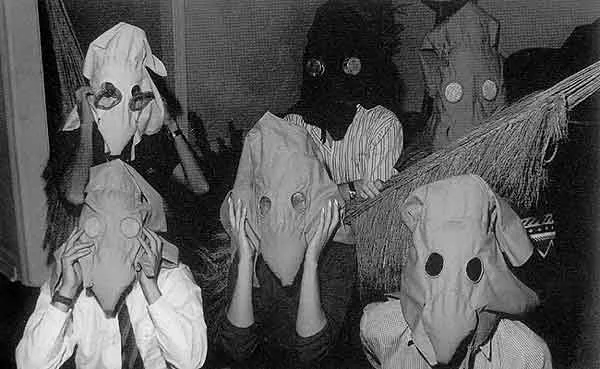
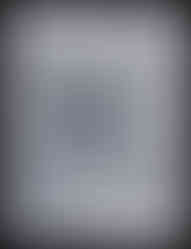



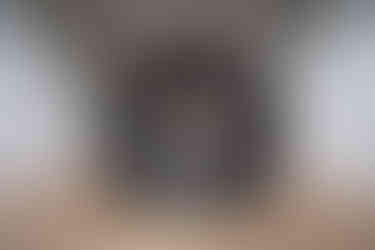






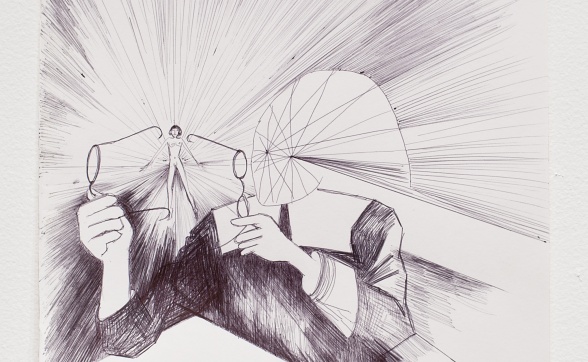




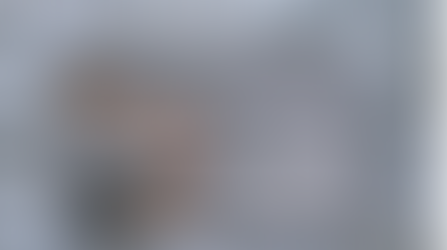























Comments